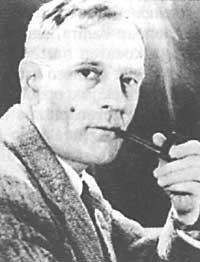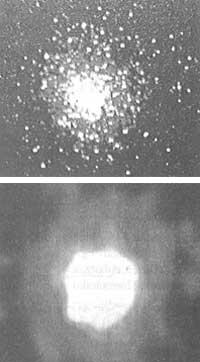Hubble, finally in orbit

The idea of placing a telescope in space is not new. In 1923 (while artificial satellites and spaces were the dream of the mad) Hermann Oberth, father of the German rocket, first launched the idea. Forty years later, the US Academy of Sciences declared that the construction of the space telescope should be a fundamental scientific objective at the national level. In 1971 NASA began conducting feasibility studies. Four years later ESA (European Space Agency) joined this project.
The main mirror of the telescope ended in 1981. Hubble had to be in space for 1983, but NASA, due to different problems, was delaying the release. Once all the problems have been overcome, the remodeling of the space program caused by the Challenger accident when it was about to be launched in 1986, has delayed the launch of the space telescope.
Why the space telescope?
If we placed a telescope on Mount Everest and looked at the sky for the target on the cleanest night, the Earth's atmosphere would hinder our observation. The atmosphere partially absorbs, refracts and diffracts the ultraviolet, visible and infrared radiation we receive, affecting the quality of astronomical images. These radiations provide enormous information about the origin, evolution and present of the Universe and astronomers on the surface cannot know it.
The space telescope is named Hubble in homage to American astronomer Edwin Hubble. Hubble's observations gave many data in favor of the current Big Bang theory. According to this theory, the Universe was born 12-20 billion years ago as a result of a big explosion. In the three minutes after the explosion the first atomic nuclei appeared. 500,000 years later hydrogen and helium atoms were formed. These eventually created galaxies. Astronomers don't know how and when that happened. As Hubble will be able to detect the light that has traveled in space between 12 and 14 billion years, it is expected to provide new data on these processes. Telescopes on Earth can only go back 2 billion years.
Among the contributions of astronomer Hubble, it was demonstrated that other galaxies move away from us. That is, our Universe is expanding. The speed of expansion of the universe is calculated through the Hubble constant (velocity of the galaxy divided between distance from us to the galaxy). The first value of this constant was given in 1927 and then they have been fine-tuned, but it is not yet accurate enough.
Hubble will collect data to get a more accurate value for this constant by analyzing the stars called primes 1.
Hubble Features

Hubble weighs 11 tons, has a length of 13.1 m and a width of 4.47 m. It is a reflection telescope; Newton XVII. Like the one designed in the twentieth century. The telescope's main mirror, 2.4 m in diameter, is about half the diameter of the California Mount Palomar telescope. Its resolution will be 0.1 seconds of arc, ten times higher than that of the Earth.
In reflection telescopes, the large main mirror collects light and reflects it into a smaller secondary mirror. This concentrates the light more and leads the rays to the focal plane of the observation instruments.
The most important part of the telescope is the main or primary mirror. NASA decided that it should be optically perfect. It is understood that the quality of the image contained in the focal plane must depend on the nature of the light and not on the quality of the tooling. Mirrors should not be continuously contracted or dispersed, but thermodynamically stable. Since the telescope orbits the Earth, changes are very frequent when moving from day to night.
To meet these requirements, engineers have designed the main mirror in three layers: the rear plate, the honeycomb inner layer and the reflective surface. The honeycomb decreases a little: From 3,500 kg to 800 kg. Mirror polishing has been done by computer-controlled machines giving hyperbolic shape, but the final finish has been done manually. Subsequently it has been covered with an aluminum layer, as this metal reflects 99.5% of the light. Unfortunately, aluminum does not adequately reflect ultraviolet radiation and also oxidizes losing reflective properties. To avoid this they have covered the aluminum with a very thin layer of magnesium fluoride. Magnesium fluoride adequately reflects ultraviolet light and lets visible light pass through. However, the reflectance of the telescope in the field of auditory light is 85%.
The Hubble focal plane features two cameras (wide field of view and search for luminous objects), two spectrometers, a photometer and three high-precision guide sensors. However, what this tool can do is limited by the cause of energy supply. Only two of them can work simultaneously. In addition, before you can use the tools it takes 12 hours for them to stabilize. This reduces the degree of use of the telescope.
Conclusion
Hubble has had a long history full of obstacles. In December, when he is ready to start working, he will open a new window to the Universe and some believe that a revolution will occur compared to the Galileo telescope. The future will say whether that is true or not.
However, since the telescope is not only used by professional astronomers (astronomers can use it 20 hours a year), to maintain the romanticism of yesteryear we hope that fans can make some great discovery.
1.
See UNIVERSE. From Lur laune to Kuasa. Isaac Asimov. Elhuyar-Elkar 1988.





